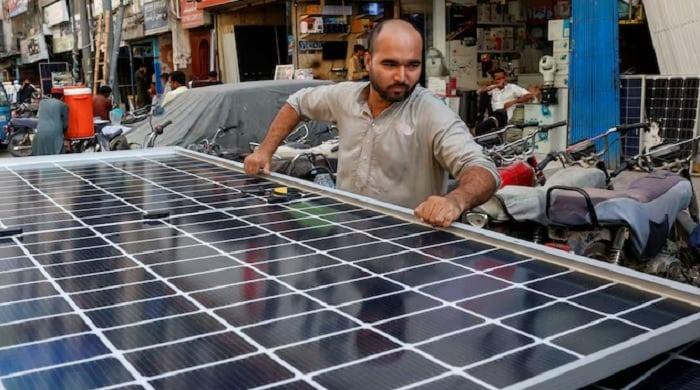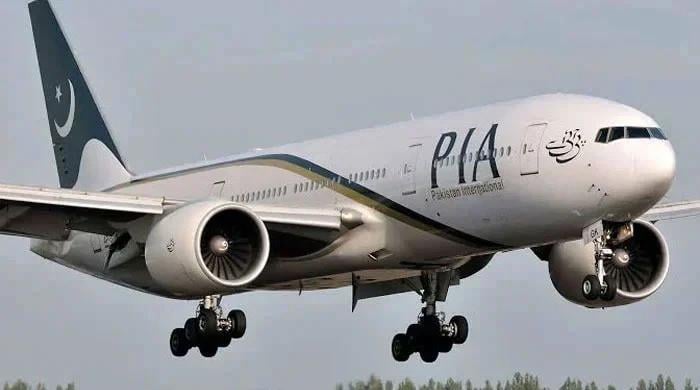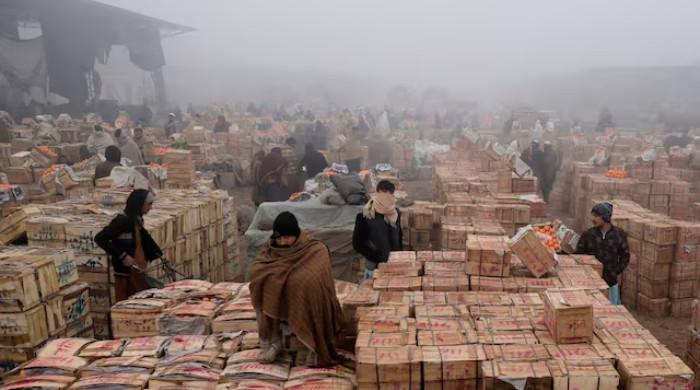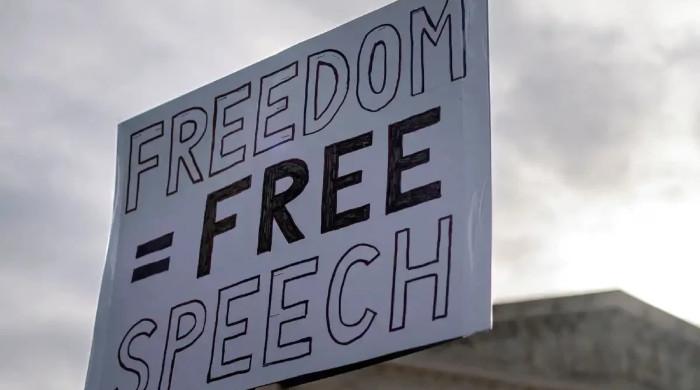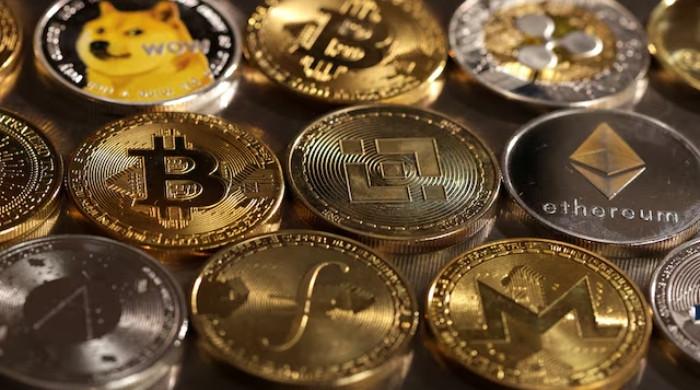The tragedy of Balochistan
"Bloodbath" on August 26 should be taken as an "eye-opener" for all
August 30, 2024
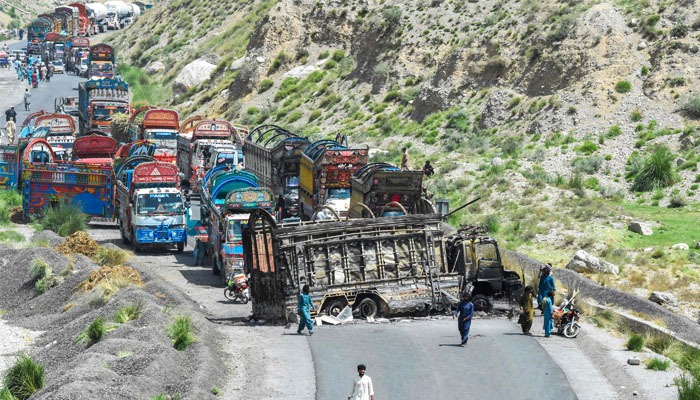
Only two months ago, I was in Quetta, and it was such a refreshing experience to meet students during three days of jam-packed sessions, ranging from serious political discussions to cultural evenings and mushairas. Thousands participated in the Cultural and Literature Festival. During the discourse, I also learned about the record number of book sales in Turbat during the Book Festival. I could be wrong, but I found young Baloch and Pashtun students from nearby areas politically mature and eager to see a better and more peaceful province. However, they do have concerns over how issues are being mishandled by the state and state operators.
But there is another side to the story, and it is quite serious as well. The young Baloch cadre, including well-educated youth, are disappointed and disgruntled with the present political elite and powerful quarters. Some of them, including young girls and women, are joining militant outlets. In recent months, two women suicide bombers blew themselves up in targeted attacks, which often reminds me of Sri Lankan Tamil women suicide bombers. It is because I had not only visited Sri Lanka as a member of an International Journalist’s Fact-Finding Mission but had also met people from across society.
Today's Baloch students and youth think and approach things far differently from the past. Though they respect political veterans, they are not ready to accept manipulated politicians or merely the state's narrative. On social media, they have a platform to express their views, rightly or wrongly, and this is the biggest challenge, which can't be addressed merely by controlling the media but by engaging them.
In both the Karachi University attack in 2022 and the Musakhail carnage on August 26, women were among the attackers. In the latest attack, the most violent in recent memory, over 50 people, including 30 civilians, were killed simply because they were from Punjab
The Baloch insurgency or terrorism in this turbulent region has its own history, but after 9/11, the rise of religious extremism, sectarianism, and nationalism took a violent turn, and even journalists became targets. I still remember covering the funeral of Aimal Kansi, a militant who was arrested by American intelligence for allegedly being involved in the killing of two CIA agents. He was executed in the US, and his body was flown to Quetta. Thousands of people attended his Namaz-e-Janaza at Quetta’s stadium in 2002. I noticed the presence of a large number of youth and students there, and talking to some of them clearly reflected the changing political dynamics of the province. From left-oriented politics until the late 70s and 80s, which were also anti-US, the hardline religious groups had started idealising some of the terror outlets.
I can recall the time when student politics, led by the Baloch Students Organisation (BSO) and the National Awami Party (NAP), the most organised and powerful left-oriented party, was in command not only in Balochistan but also in Khyber Pakhtunkhwa (KP), which at that time was called NWFP (North-West Frontier Province). Student unions were strong and politically oriented as well. The students used to discuss and had a grip on local, national, and international politics.
Until NAP was banned in 1973, it was one of the strongest left-wing parties with electoral support, and it had its own government in Balochistan and a coalition with the right-wing Jamiat Ulema-e-Islam (JUI) in the then NWFP. In the 70s, NAP also had a strong influence in East Pakistan. One could imagine the level of political tolerance at that time, with left-wing NAP and right-wing JUI, led by Maulana Mufti Mahmood, father of Maulana Fazlur Rehman, joining forces on political issues, leaving ideological conflicts behind. When the federal government of former prime minister Zulfiqar Ali Bhutto sacked the Balochistan government of NAP, Maulana Mufti Mahmood, who was the Chief Minister of KP, dissolved the assembly and resigned in protest.
The government at the time, apparently under pressure from the US and Shah-led Iran, also banned NAP and imprisoned its leadership, which comprised towering personalities like Khan Abdul Wali Khan, Sardar Attaullah Mengal, and Mir Ghous Bux Bizenjo, along with other NAP leaders from all four provinces. They later faced sedition charges and were tried by a special tribunal. This was the beginning of the first major insurgency, which the establishment and government tried to crush through a military operation. It was at this time that the case of the disappearance and ultimate killing of Asad Mengal, son of Sardar Attaullah Mengal, was reported, which today many regard as the first case of disappearance.
The two most sensitive provinces have not recovered since then; rather, they have gone from bad to worse, with the Soviet Union's invasion of Afghanistan followed by Pakistan’s uncalled-for involvement in the name of “Afghan Jihad.” Under General Zia ul Haq, this made the two provinces ‘home ground’ for Jihad-e-Afghanistan. Even at that time, politicians like Wali Khan and Ghous Bux Bizenjo warned the state of the possible repercussions in the form of internal conflict. Their foresight was truly ignored by the then-military leadership. It not only resulted in a massive influx of drugs and arms but also saw over five million Afghan refugees, and the political dynamics completely changed.
Many of those ‘Mujahideen’ turned into ‘Muslim warriors’ and gave rise to hardline groups.
Former governor of Balochistan and one of the saner political voices in the country, the late Ghous Bux Bizenjo, once told me in an interview some three decades ago, “Both civilian and military rulers have mishandled and misunderstood the province, and if they do not learn their lesson, things may go out of control and even people like me would not be able to resolve the burning political and economic issues.”
Had someone like Ghous Bux Bizenjo stayed in power for longer or been used for resolving burning political issues, whether related to the province or the country, the situation would have been far different from what we have witnessed in post-9/11 Balochistan.
After the mature Baloch political leaders almost vanished, even people like the late Nawab Akbar Bugti tried, but he too became a victim of state policy led by General Pervez Musharraf. From the day he was killed, a political solution became difficult. Still, even people like the late Mir Hasil Bizenjo, son of Ghous Bux Bizenjo, Dr Abdul Malik, Sardar Akhtar Mengal, and a few others warned all those who matter that if the political process here were manipulated, things could go out of control.
The last such effort was made by none other than Nawaz Sharif, a political figure from Punjab, in 2013. I closely witnessed those meetings at Murree Hill's rest house. I was sitting with Hasil, my university fellow, when the then prime minister Nawaz Sharif made a bold decision and nominated Dr Malik of the National Party as chief minister, despite reservations from Pakistan Muslim League-Nawaz (PML-N) Balochistan President Sanaullah Zehri. Finally, Zehri agreed on the condition that the five-year tenure would be divided into two and a half years each. Thus, Malik, a soft-spoken nationalist, became the CM of Balochistan. Had the state accepted some of Malik’s recommendations and even given him more time, who knows, things could have been different, even if not completely resolved.
It was a very positive message from Punjab to Balochistan, but in 2018, the state, as part of its national political narrative in which they wanted PML-N out of power, allegedly manipulated and created revolt within PML-N, giving birth to a new party, the Balochistan Awami Party.
The defeat of Hasil Bizenjo in the chairman Senate election was perhaps the last nail in the coffin. Had Hasil been elected chairman of the upper house, a very positive message would have been sent to the “angry Balochs,” but Hasil himself told me a night before the elections that “General Faiz [Hameed] had bought many of the Senators who were supporting him.”
The state needs to understand that their ‘handpicked Baloch’ may not remove the sense of deprivation among the saner Baloch population and political class.
The political vacuum created by the absence of national Baloch political leadership cannot be filled by the so-called leadership now in the Assembly or the government.
Today, there is a need to engage those who still believe in mainstream politics, like Dr Abdul Malik, and Sardar Akhtar Mengal, and Baloch nationalist thinkers like Sanaullah Baloch.
The way the state and the government are trying to pressurise the media and journalists there, with the latest “undeclared” takeover of the Quetta Press Club on the pretext that the club can’t hold any conference or seminar without prior NOC (no objection certificate) from the Deputy Commissioner of the city, is the most cowardly attack on the freedom of the press.
The stories of the slain journalists and the kind of threats they faced in the past few years are horrifying. They have even faced sedition cases. The Baloch problem and Balochistan’s politics cannot be resolved in this manner.
The "bloodbath" on August 26, on the eve of the death anniversary of the former governor of Balochistan, Nawab Akbar Bugti, who was assassinated in 2006 during General Pervez Musharraf's government, should be taken as an "eye-opener" for all.
Whether it is Gwadar Port or CPEC (China-Pakistan Economic Corridor), the solution to the crisis lies from within. Solutions for such a sensitive province can never come through a "manipulated mandate."
It is still not too late, but certainly, things are slipping out.
It is imperative to involve those who can positively influence the conflict and are trusted by both sides. Balochistan has immense potential, with nearly 60 to 65% of its population being youth. Engage the young people to disengage them from extremist ideologies. Listen to them, even if their views oppose yours, and you may discover the solution.
What I witnessed in Quetta two months back clearly reflects that the youth want solutions to their problems, such as education, health, jobs, cultural outlets, clean roads, clean politicians, and noninterference from those who interfere unnecessarily. They have the right to their own resources, and it is crucial to enforce this now, as time is slipping away for mere assurances.
The writer is a columnist and analyst for GEO, Jang and The News.
X:@MazharAbbasGEO




